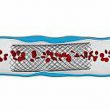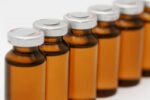Despite progress in antiplatelet, anticoagulant therapy and invasive strategy, patients with non-ST-segment elevation acute coronary syndrome present an elevated risk of events. There is no consensus on the use of a single anticoagulant which can be administered in the Coronary Unit and also at the time of coronary intervention. The anticoagulant direct factor Xa inhibitor,...
2nd-generation drug-eluting stents, results for “real” patients at two years
Original title: Clinical Outcome Following Stringent Discontinuation of Dual Anti-Platelet Therapy After 12 Months in Real-World Patients Treated With Second-Generation Zotarolimus-Eluting Resolute and Everolimus-Eluting Xience V Stents: Two-Year Follow-up of the Randomized TWENTE Trial. Reference: Keneth T, Hanim S, et al. J Am Coll Cardiol 2013. Article in press. In recent years there have been new drug-eluting...
Everolimus eluting stent in total occlusions
Original title: Safety and Effectiveness of Everolimus-Eluting Stents in Chronic Total Coronary Occlusion Revascularization Results From the EXPERT CTO (Evaluation of the XIENCE Coronary Stent, Performance, and Technique in Chronic Total Occlusions) Multicenter Trial. Reference: David E. Kandzari et al. J Am Coll Cardiol Intv. 2015, on line before print. The aim of this study was to evaluate...
Double Anti platelet aggregation would be sufficient for six months after angioplasty in patients with stable coronary disease NSTSEACS.
Original title: 6- Versus 24-Month Dual Antiplatelet Therapy After Implantation of Drug. Reference: Eluting Stents in Patients Nonresistant to Aspirin The Randomized, Multicenter ITALIC Trial. JACC.VOL. 65, NO. 8, 2015 Current recommendations on dual antiplatelet therapy (DAPT) are under review, particularly in acute coronary events due largely to the advent of second-generation stents. This work studied the hypothesis...
Greater platelet reactivity in diabetic patients receiving DES and clopidogrel
Original title: Impact of diabetes mellitus and metabolic syndrome on acute and chronic on-clopidogrel platelet reactivity in patients with stable coronary artery disease undergoing drug-eluting stent placement. Reference: Feldman L. et al. Am Heart J. 2014; Epub ahead of print. Diabetes mellitus type 2 (T2DM) or metabolic syndrome patients undergoing drug eluting stent implantation have 3 to 4...
Resistance to Aspirin Associated to Greater Risk of In-Stent Thrombosis and Death
Original title: Aspirin Treatment and Outcomes After Percutaneous Coronary InterventionResults of the ISAR-ASPI Registry. Reference: Katharina Mayer et al. J Am CollCardiol. 2014;64(9):863-871. Aspirin administration, as part of the double antiagregation scheme, is essential in the context of PCI. The correlation between high platelet reactivity to on-clopidogrel treatment and higher events rates has been well established, while data...
Less Bleeding at the Expense of a Higher Risk of Acute Thrombosis with Bivalirudin
Original title: Bivalirudin versus heparin in patients treated with percutaneous coronary Intervention: a meta-analysis of randomised trials. Reference: Salvatore Cassese et al. EuroIntervention 2014;10-online publish-ahead-of-print August 2014. Current recommendations for the use of bivalirudin in PCI patients are mostly based on studies comparing bivalirudin vs. heparin combined with glycoprotein IIb/IIIa inhibitors. Whether bivalirudin is superior to heparin alone...
Hemodialysis Associated to Higher Incidence of In Stent Thrombosis
Original title: Impact of hemodialysis on local vessel healing and thrombus formation after drug-eluting stent implantation. Reference: Akihide Konishi, et al. Journal of Cardiology 2014;64:25-31 Even though the benefit of DES implantation to the general population is undeniable, it has been proved lower in hemodialysis patients (HD); the reason behind this phenomenon remains unclear. 121 patients received...
Higher percentage of strut coverage in biodegradable polymer DES vs. durable polymer DES. Strut level OCT analyses
Original title: Randomized comparison of strut coverage between Nobori biolimus-eluting and sirolimus-eluting stents: an optical coherence tomography analysis. Reference: EuroIntervention 2014; 9-online publish-ahead-of-print February 2014 The aim of this study was to compare strut coverage at six months follow up after Nobori biolimus eluting stent (N- BES) implantation versus Cypher Select sirolimus eluting stent (SES) implantation....
Almost 40 % of those who initially receive clopidogrel then switch to prasugrel or ticagrelor in clinical practice.
Original title: In-hospital switching of oral P2Y12 inhibitor treatment in patients with acute coronary syndrome undergoing percutaneous coronary intervention: Prevalence, predictors and short-term outcome. Reference: Dimitrios Alexopoulos et al. Am Heart J 2014;167:68-76.e2. Given the availability of 3 Oral P2Y12 receptor inhibitors (clopidogrel, prasugrel, and ticagrelor) with different safety and efficacy profiles, the change from one to another...









